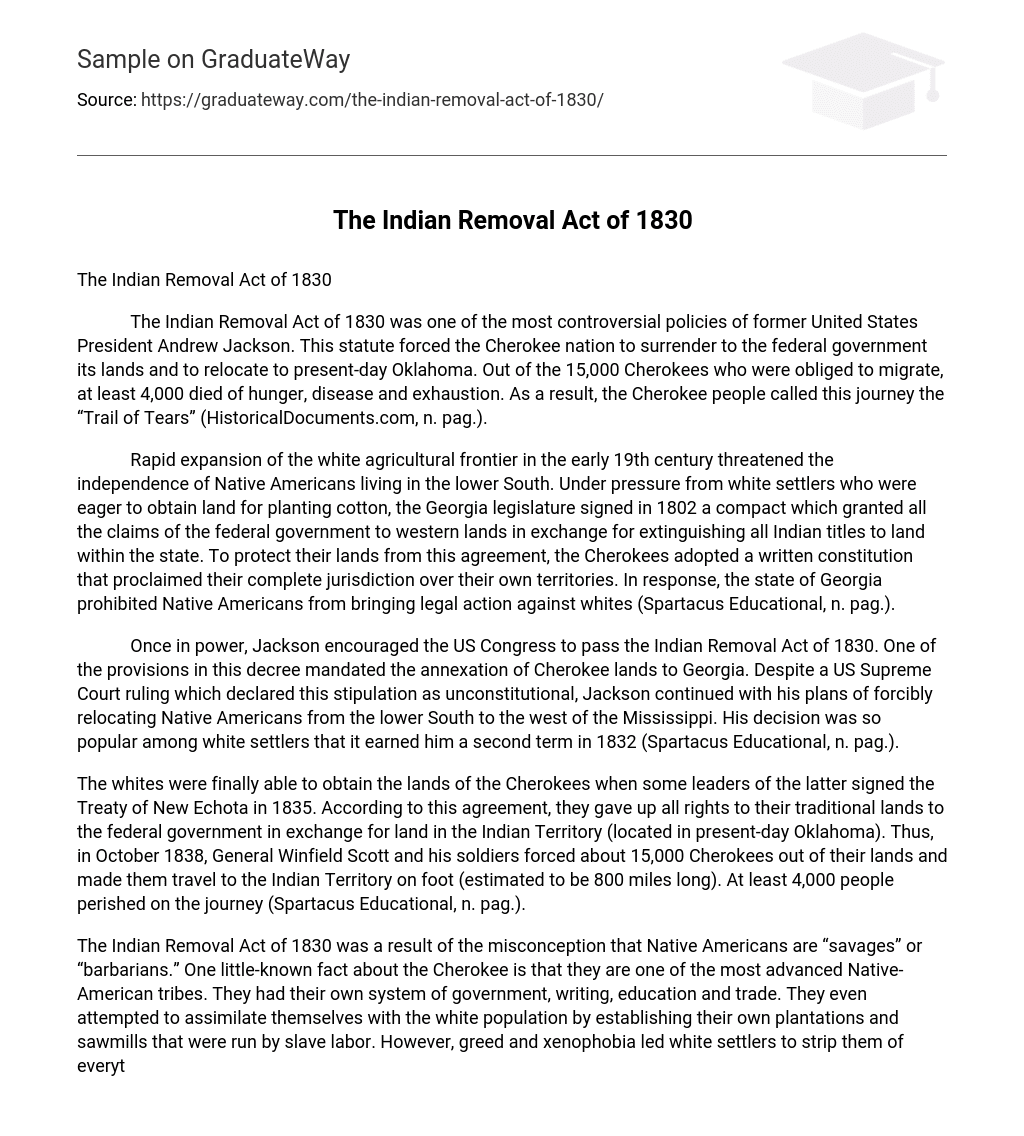The Indian Removal Act of 1830 was one of the most controversial policies of former United States President Andrew Jackson. This statute forced the Cherokee nation to surrender to the federal government its lands and to relocate to present-day Oklahoma. Out of the 15,000 Cherokees who were obliged to migrate, at least 4,000 died of hunger, disease and exhaustion. As a result, the Cherokee people called this journey the “Trail of Tears” (HistoricalDocuments.com, n. pag.).
Rapid expansion of the white agricultural frontier in the early 19th century threatened the independence of Native Americans living in the lower South. Under pressure from white settlers who were eager to obtain land for planting cotton, the Georgia legislature signed in 1802 a compact which granted all the claims of the federal government to western lands in exchange for extinguishing all Indian titles to land within the state. To protect their lands from this agreement, the Cherokees adopted a written constitution that proclaimed their complete jurisdiction over their own territories. In response, the state of Georgia prohibited Native Americans from bringing legal action against whites (Spartacus Educational, n. pag.).
Once in power, Jackson encouraged the US Congress to pass the Indian Removal Act of 1830. One of the provisions in this decree mandated the annexation of Cherokee lands to Georgia. Despite a US Supreme Court ruling which declared this stipulation as unconstitutional, Jackson continued with his plans of forcibly relocating Native Americans from the lower South to the west of the Mississippi. His decision was so popular among white settlers that it earned him a second term in 1832 (Spartacus Educational, n. pag.).
The whites were finally able to obtain the lands of the Cherokees when some leaders of the latter signed the Treaty of New Echota in 1835. According to this agreement, they gave up all rights to their traditional lands to the federal government in exchange for land in the Indian Territory (located in present-day Oklahoma). Thus, in October 1838, General Winfield Scott and his soldiers forced about 15,000 Cherokees out of their lands and made them travel to the Indian Territory on foot (estimated to be 800 miles long). At least 4,000 people perished on the journey (Spartacus Educational, n. pag.).
The Indian Removal Act of 1830 was a result of the misconception that Native Americans are “savages” or “barbarians.” One little-known fact about the Cherokee is that they are one of the most advanced Native-American tribes. They had their own system of government, writing, education and trade. They even attempted to assimilate themselves with the white population by establishing their own plantations and sawmills that were run by slave labor. However, greed and xenophobia led white settlers to strip them of everything that they have.
Works Cited
“Indian Removal Act.” n.d. Spartacus Educational. 11 November 2008
<http://www.spartacus.schoolnet.co.uk/WWindianremove.htm>.
“The Indian Removal Act of 1830.” 2007. HistoricalDocuments.com. 11 November 2008
<http://www.historicaldocuments.com/IndianRemovalAct.htm/>.





